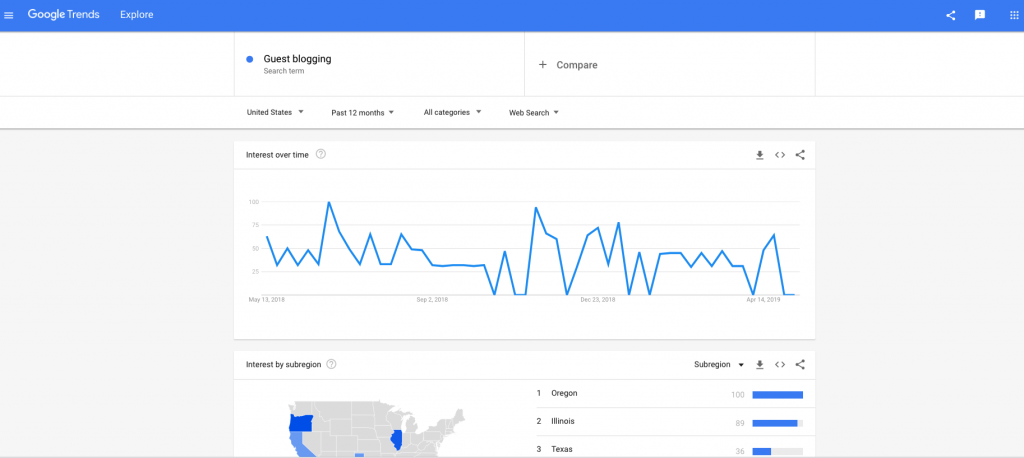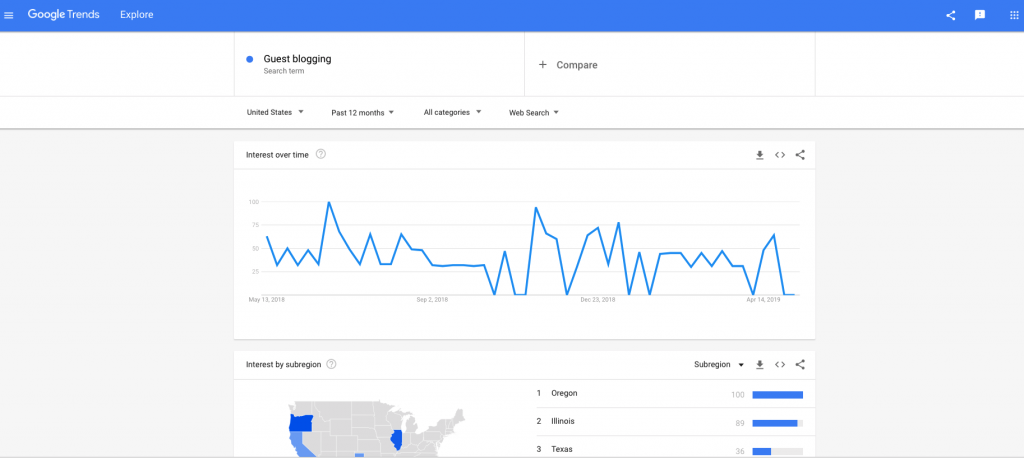10 Places to Find Creative Ideas For Your Next Blog

I will begin under the presumption that you have created a blog to share with your target audience for at least one of the following reasons: to educate, inform or entertain them.
From here, you may even wish to encourage them to take some form of action, i.e to subscribe, like and share your content, or to buy your product or service. The best way to achieve this is by generating a continuous flow of relevant and updated content on your blog.
The fact that you have already started a blog leads me to believe you already know the benefits of sharing content online. Great. However, the sheer fact that you are reading this article, makes it logical to suggest that you are in need of some creative elixir to boost your blog. The online space is exhausted with ample content on every conceivable question, concern, argument and concept. How then, does one pull out the bag, new and refreshing insight on anything at all? One way is to bridge the gap between existing content to create something new.
The first step to creating compelling and engaging content is to get your creative juices flowing. In spite of your niche or blog content, there are ways to find refreshing and creative ideas for your next blog, without wrecking your brain (too hard).
Creativity is not a birthright. Everyone possesses the capacity to create, imagine or perform something in some original context. Being open to exploring the options listed below, makes finding exciting and creative ideas almost unavoidable.
1. Hubspot Topic generator

Number one on this list for its sheer simplicity. Enter up to five nouns for topics you want to write about, click “Give me Blog Ideas” and in a matter of seconds, the generator tool will suggest a week's worth of blog ideas. If you find yourself wanting more, unlock years worth of blog ideas and more information on how to modernise your SEO strategy.
If you do decide to source your blog ideas from Hubspot Topic Generator, you can rest in the knowledge that your blog ideas will never be shared with any other users of the tool. They won’t be shared and are exclusive to the topics you submit. The only way for others to access them online is if you incorporate them into your published blog posts.
Hubspot Topic Generator is ideal for those who already have a topic in mind, but require some assistance in generating blog ideas. It should be noted, however, it can be remarkably addictive and awfully difficult to pull away from. Use with caution!
2. Discussion forums- Quora and Reddit

Thanks to developments in technology, most discussions on the web take place in real-time. You can watch how they begin, unfold and where they lead to. Such forums are instrumental in finding the most relevant and up to date material for your blog. To add a creative spin on what you post, simply stick the topic in No.1’s Hubspot Topic Generator and voila.
Reddit surely flexes its colloquial muscles as it allows for a virtual podium of national and international discussion. Threads exist on almost every conceivable topic and welcome all opinions. If you can’t find a thread that is of relevance to your subject, simply create one and invite participants to engage.
Discussion forums are perfect ways to get into the mind of your readers and gain a sound appreciation for their thoughts, interests and curiosities- of which you should mould your blog.
3. Social Media
After you publish blog content, share and promote it on your social media channels. Tweet a link to existing blog posts and directly ask for your audience’s opinions on the topic. For a more in-depth and focused source of feedback, post the blog post to a LinkedIn group and ask the members for their thoughts.
These direct avenues of communication should be fully exploited for both your own and the benefit of your audience. Ultimately, the millions of conversations continuously taking place on the internet on current events, likes, preferences, jobs, opinions etc, are blog post ideas sitting right at your fingertips.
Follow hashtags for inspiration. Look for trending topics relating to your niche and follow hashtags that are relevant to your blog. From here you can guesstimate the sentiment attached to the hashtag and begin to consider topic ideas to reinforce or reject these sentiments. A controversial blog post on a trending topic will almost certainly attract readers.
4. Google Trends

This tool enables you to see how many people are looking for a specific term online over a period of time. Essentially, it shows this data in relation to all the searches it processes and when one term in particular spikes in relation to other searches, Google classifies it as a ‘trend’.
Simply visit the Google Trends page and you’ll instantly see which stories are trending at the moment. To get more specific, type in the keyword you want to research, and find all trends relating to your topic.
This is a useful tool for bloggers. Take no risks in writing a blog post that you are uncertain of the level of audience interest. Having assessed what’s trending on Google Trends, you are already ahead of those who chose not to. Craft a blog post around a trending issue and you are more than guaranteed to see an increased level of traffic to your site than if you hadn’t used Google Trends.
5. Read User Comments
The purpose of including a comments section on your blog should be reciprocal. It should one, encourage your readership to engage with your blog. By providing them with a platform from which to voice their opinion, you can build a more established relationship with them. And two, the comments section should give you direct access to the thoughts of the most invested members of your target audience.
Make it easy to comment and ensure to reply to your comments to keep the conversation going. Consider asking questions or finishing your blog article with a question to encourage comments. Be cautious as some might take the opportunity to only post links, causing your comments section to be quite spammy. Try to filter these out to get to the invaluable opinions of those who bothered to engage with you. Use them to shape your next blog post and expect an immediate interest from your readership.
6. Ahrefs

This toolkit is used for backlinks and SEO analysis. Contained within Ahrefs are your fundamental apparatus for detecting and analysing backlinks, relevant keyword ideas and traffic estimators. Simply by examining where your readers come from and what leads them to your blog is a sure fire way to generate blog ideas that will pique the interest of your readers.
Ahrefs can help you find interesting topics that drive awareness and clicks to your site. Its ‘site explorer’ tool allows you to easily analyse your sites backlinks profile and the site of your competitors, This comes in handy when exploring the most profitable keywords for organic search.
The ‘content explorer’ tool will highlight the most shared content for any topic that possesses the largest amount of shares in social media channels. This is ultra-useful to those who aim to use social media to share and promote their content.
7. Hit the Skyscraper Technique
Start by searching popular trends and topics that are already well-received pieces of existing content. Use them by looking for a unique and exciting way to create content that communicates a similar message. Add a twist to the content by either leveraging a more engaging medium, updating the statistics or by employing a better design.
With your new and improved piece of content, upload it onto your blog. You shouldn’t have a problem attracting the attention of those who have already linked out to similar content, or those who have actively and willingly engaged with it in the past.
By pinpointing the most successful content, you come to realise that there is already a proven demand for it. Think about why and how a particular piece of content came to be so successful. Did it solve a problem? Was it particularly engaging? Contribute to these factors by keeping the most demanded content updated.
The Skyscraper Technique as a source of ideas has serious ranking potential. It is likely that Google has already indexed the existing resource well. By creating something even better, you have the potential to outrank the original and drive more traffic.
Featured Image by Gerd Altmann from Pixabay

The technique Hit the Skyscraper seems workable but the tools are not free for extensive use. In free usage section, there is a limited option to choose from
Thanks for your sharing